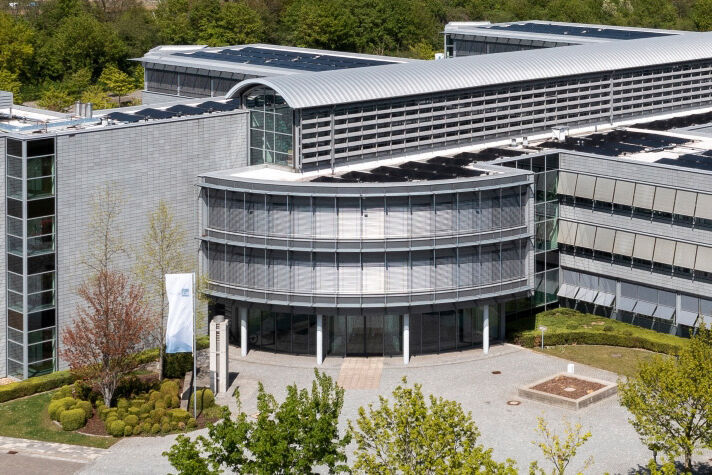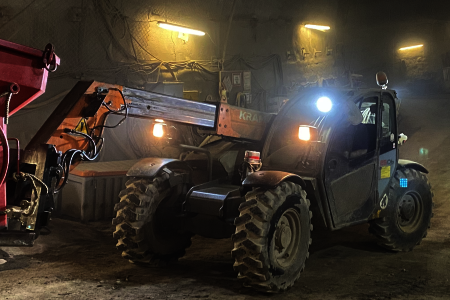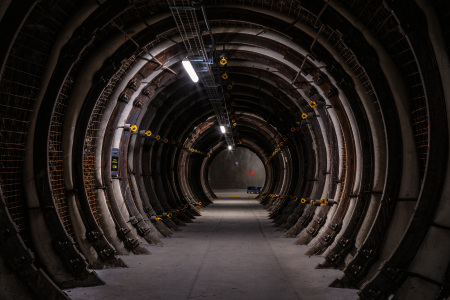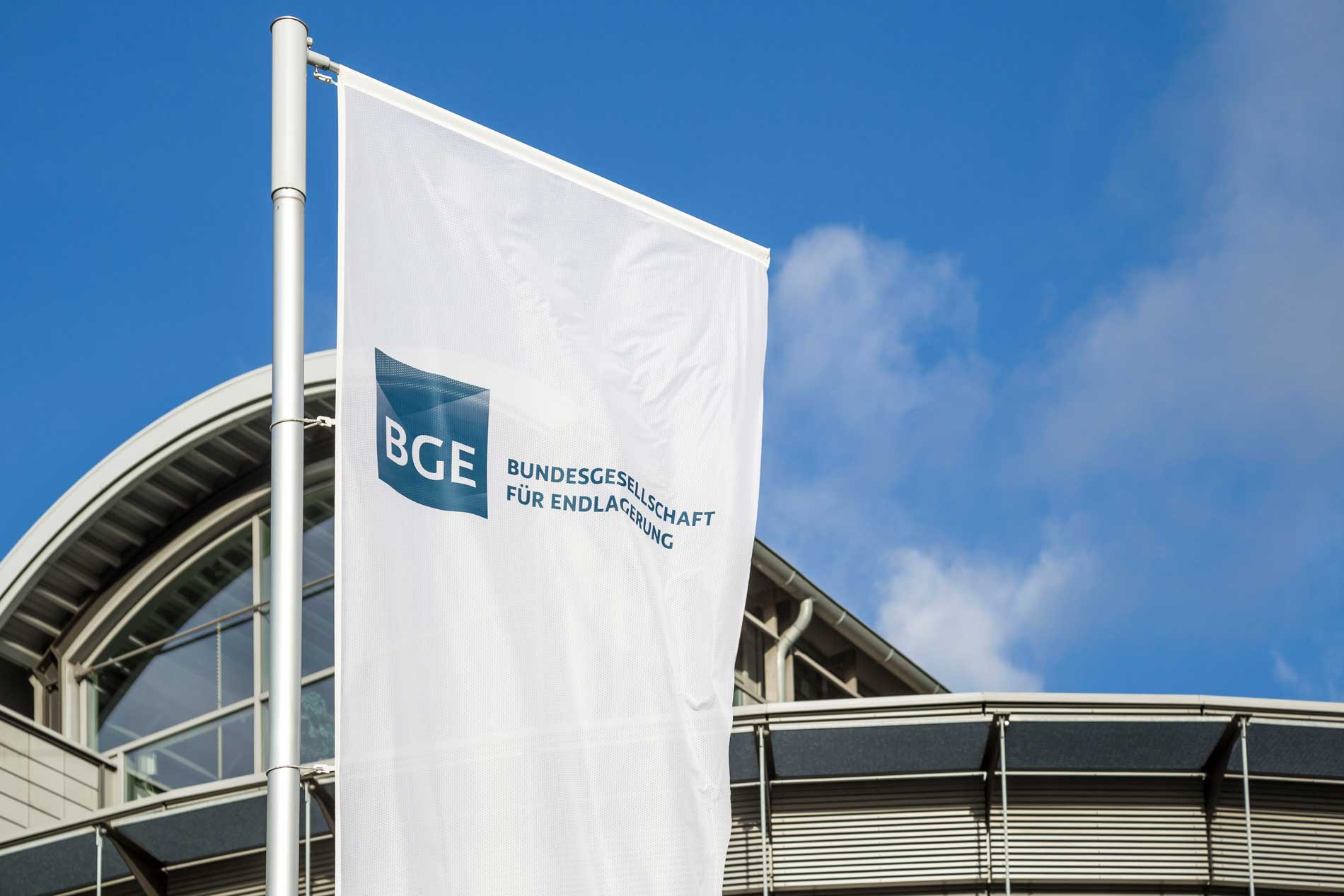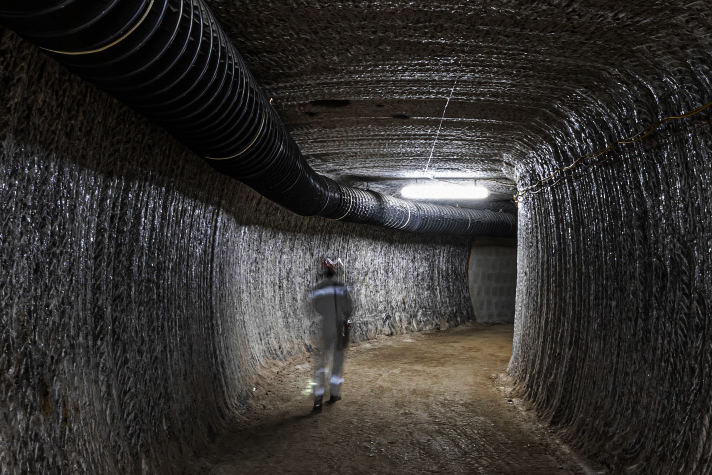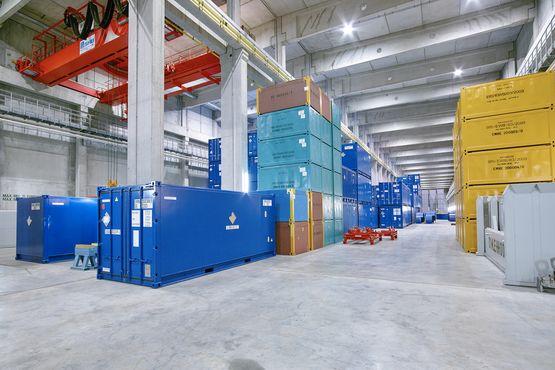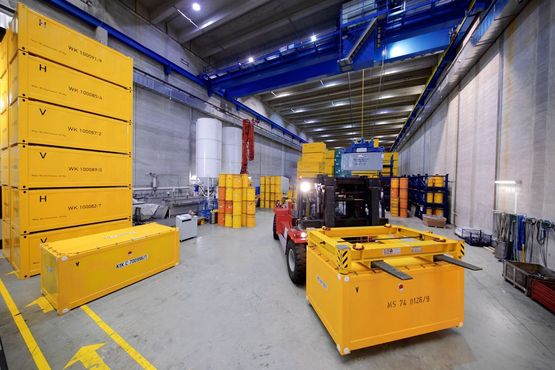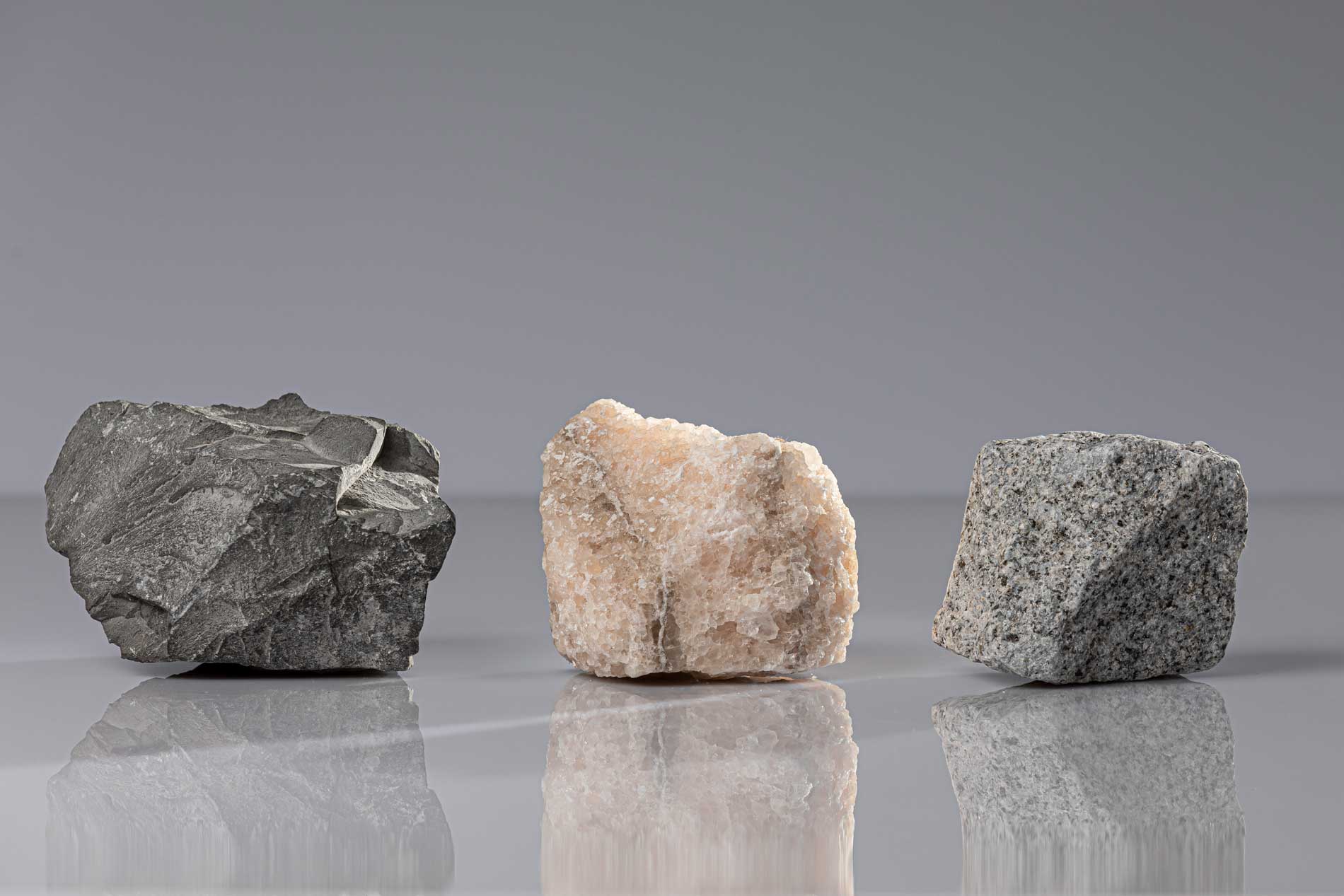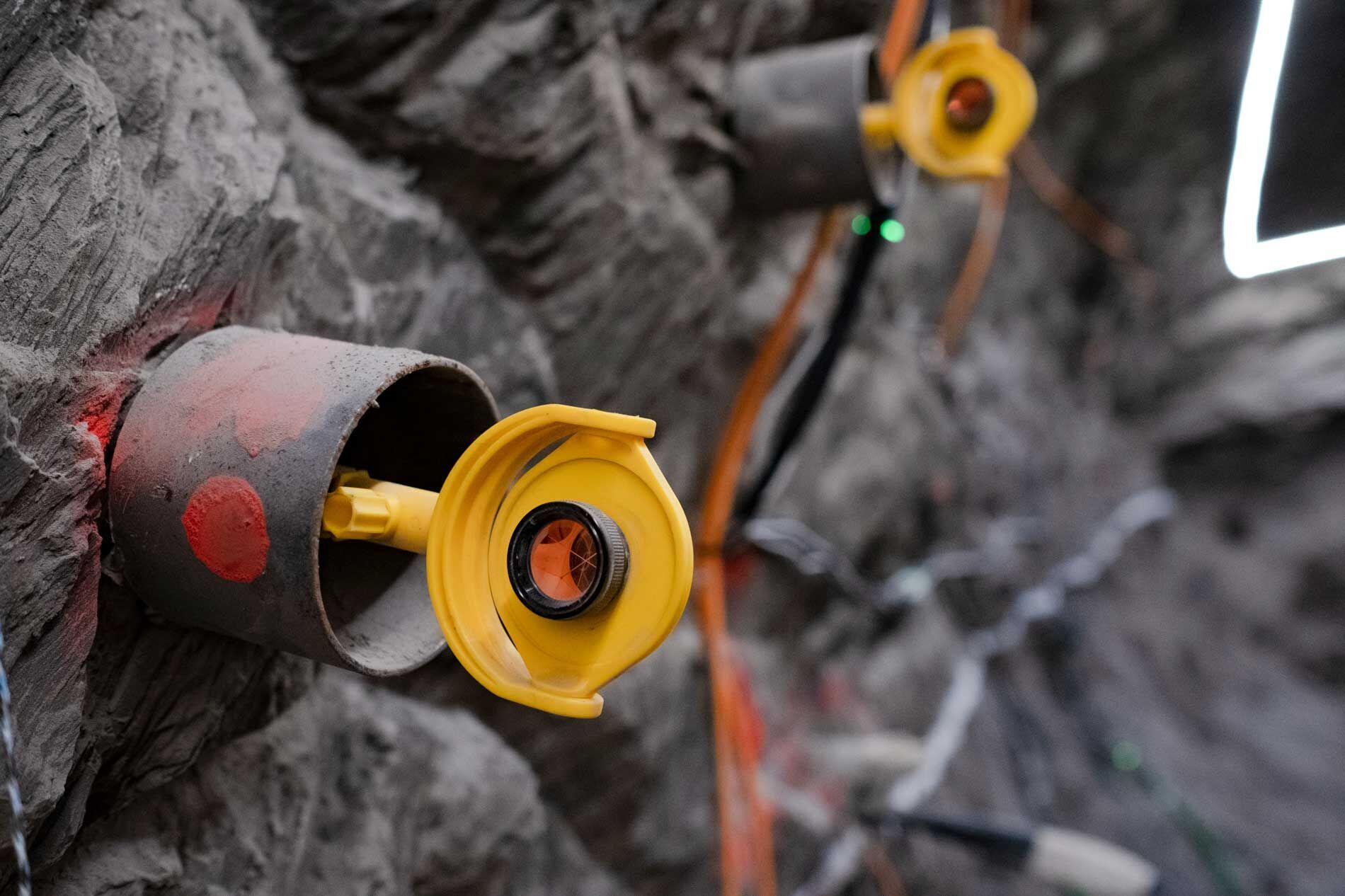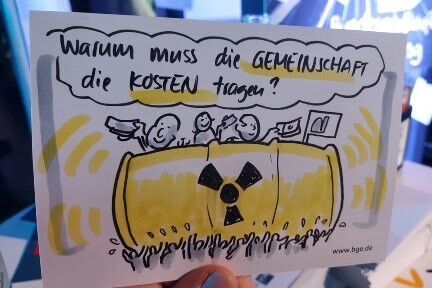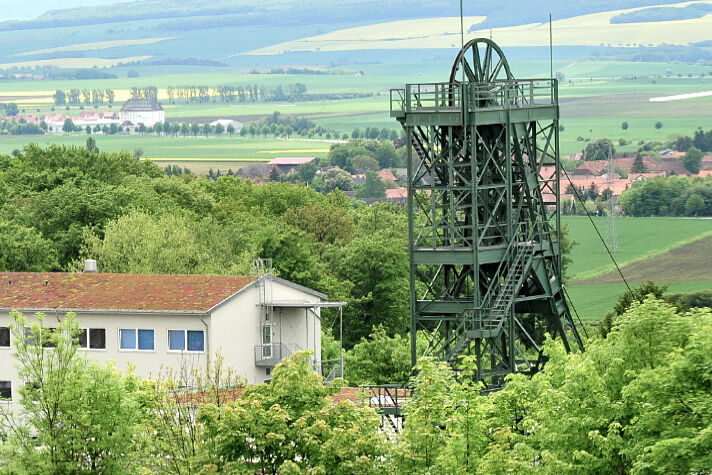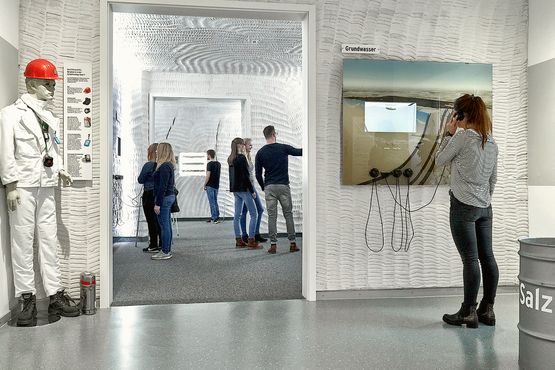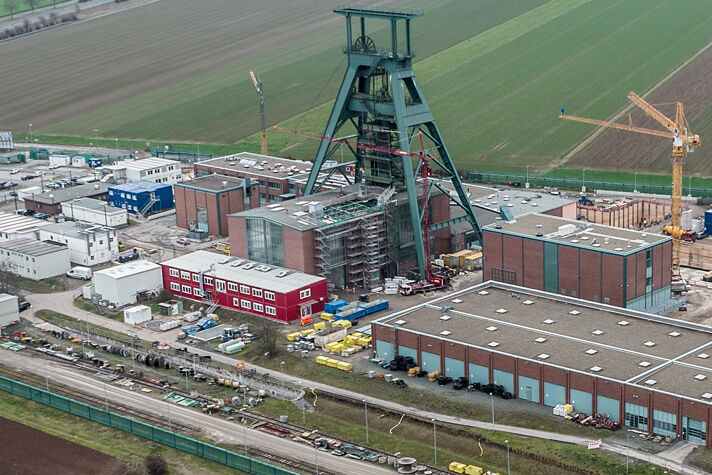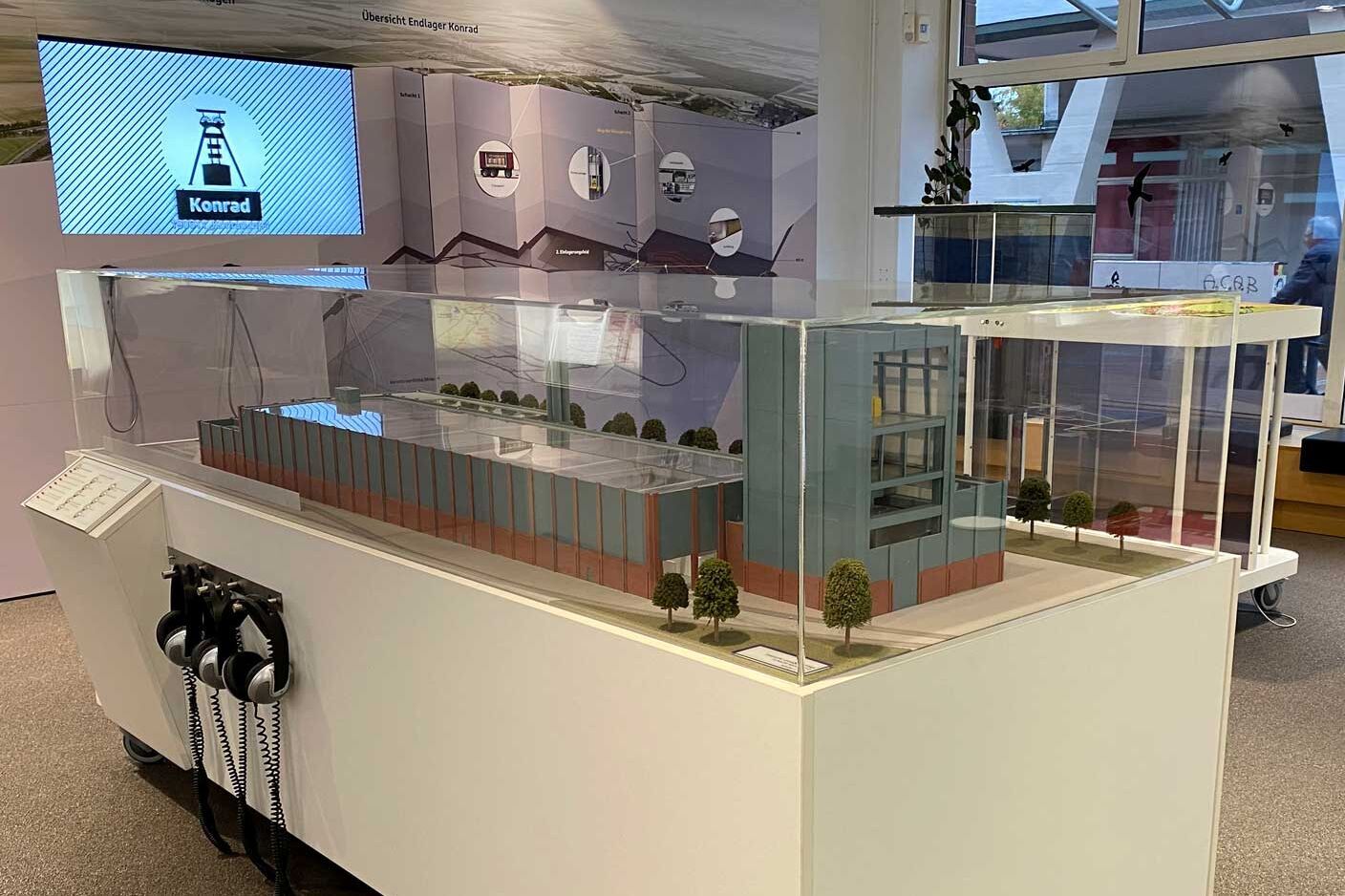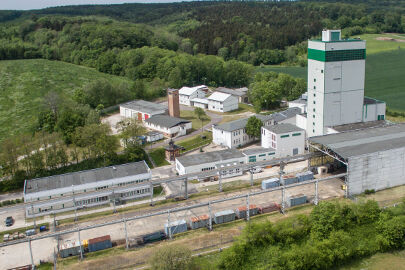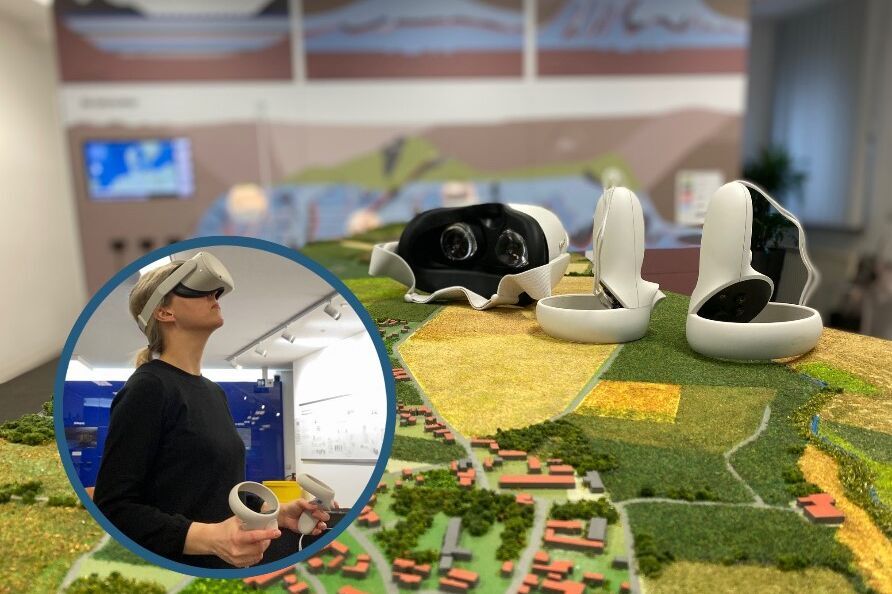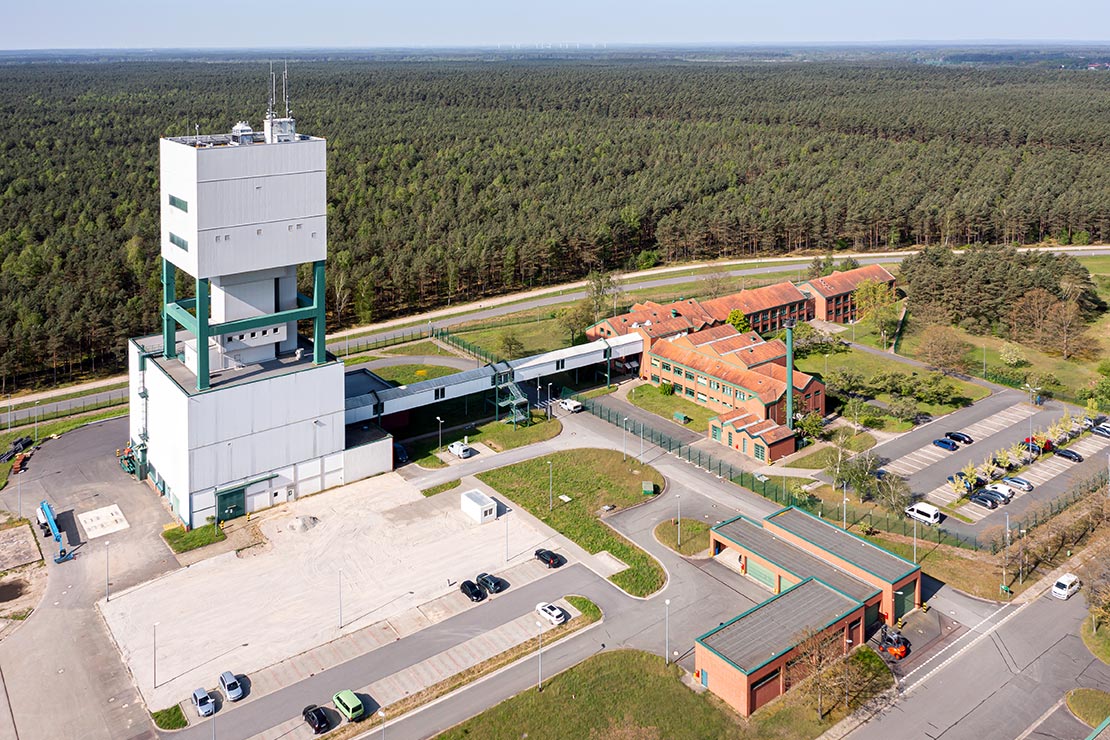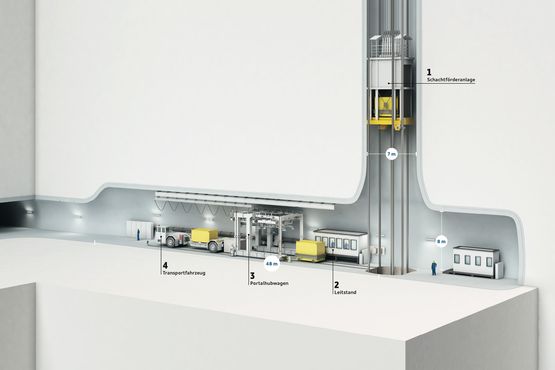In order for waste containers to be brought to the Konrad repository, a transfer station must be built at a depth of 850 metres. There, the containers that have been transported into the depths with the conveyor cage are transferred onto a vehicle and brought into the emplacement chambers.
In order to build this transfer station, the necessary cavity had to be created underground. This work has now been completed. Miners installed the last of more than 2,800 rock bolts at the end of April. It sits 10 metres deep in the rock and, together with the other anchors and a layer of concrete about 15 to 20 cm thick, forms the foundation of the tunnel structure in which the transfer station for low- and intermediate-level radioactive waste is being built. In the meantime, the work between the Konrad 2 shaft and the future repository mine, which is taking place at a depth of around 850 m, has thus been successfully completed, albeit after some difficulties.
“This is an important step for the construction of the repository”, says Dr Thomas Lautsch, technical managing director of the BGE. “The large cavity for the transfer station directly at the Konrad 2 shaft is a mining challenge that we have now mastered – and without a reported accident”. The construction work for the transfer station had begun in autumn 2017. At that time, the shaft tube was enlarged in diameter from the original 7 m to 9.5 m at a depth of between 840 and 875 m. After this, the excavation work for the transfer station began. The required cavity has a diameter of up to 13 m and a length of 60 m. Around 9,400 m3 of rock had to be excavated and transported away for the construction.
The expansion concept has been changed because of rock movements
The construction of the cavity was done in three rounds. First, the rock in the slab area was broken out, and the rock was secured. This was followed by the middle section. While building the lower section, the early detection system for rock monitoring revealed some abnormalities. The geological behaviour made it necessary to adapt the expansion concept. Among other things, compression joints that had been left open were sealed, and the construction was reinforced for further excavation.
Overall, delays were minor, and the construction was completed almost on schedule. In order to do so, the work had to be intensified and reorganised. “We have lost some time here. However, it is far more important that we guarantee a safe expansion that will be almost maintenance-free for the operational phase of the repository”, says Dr Thomas Lautsch.
Important interface between shaft and repository mine
The large diameter of the gallery is necessary to accommodate the straddle carrier, which will later lift the waste packages from the conveyor cage onto a transport vehicle in the transfer station. It will be some time before the construction work can continue. First, the forces acting from the mountains (i.e. rock pressure) must subside or be redistributed. This may take several months and will continue to be monitored by continual geotechnical measurements.

